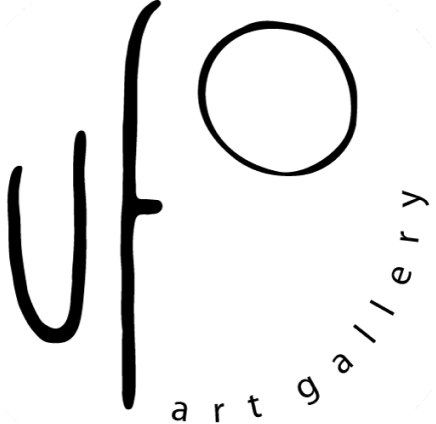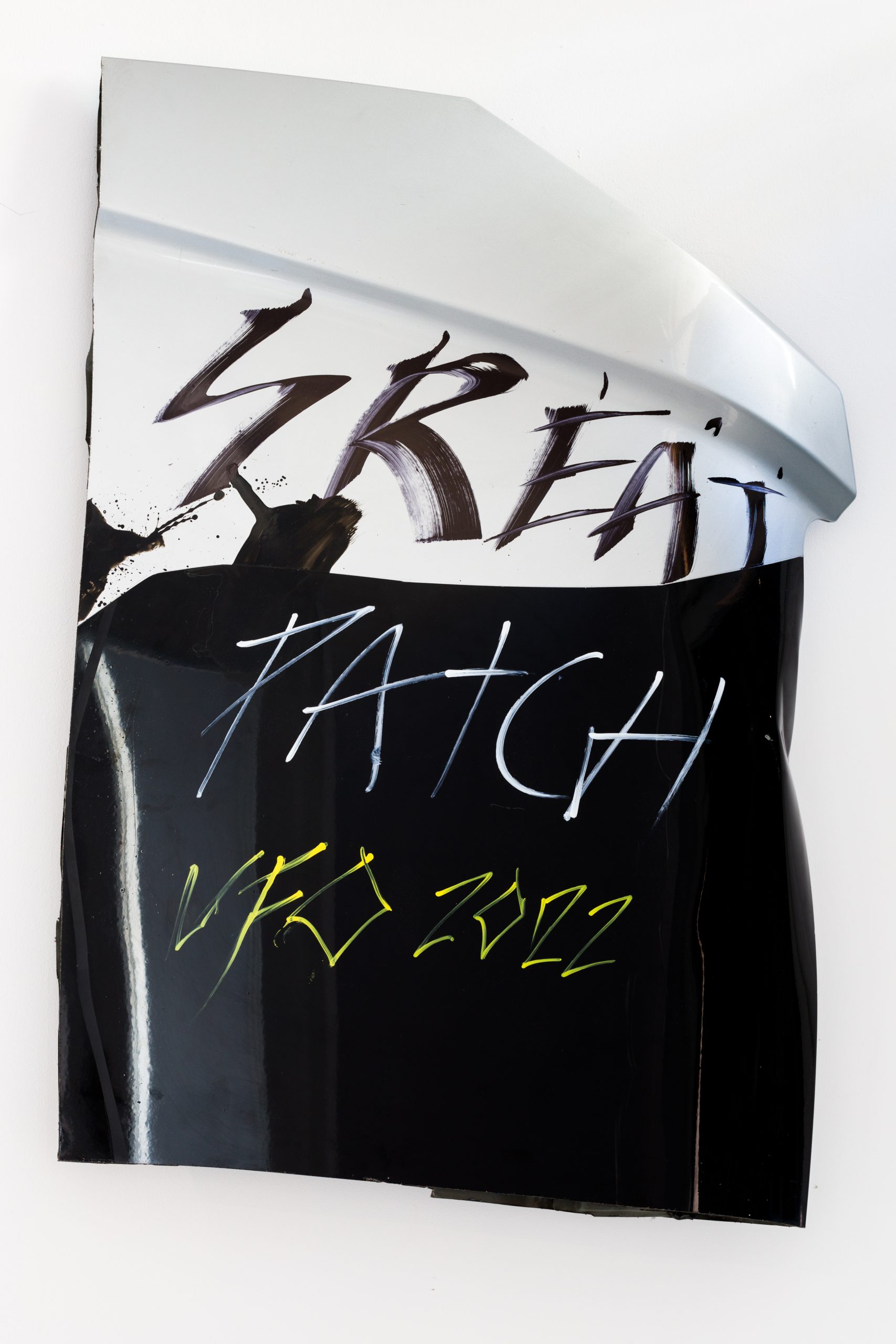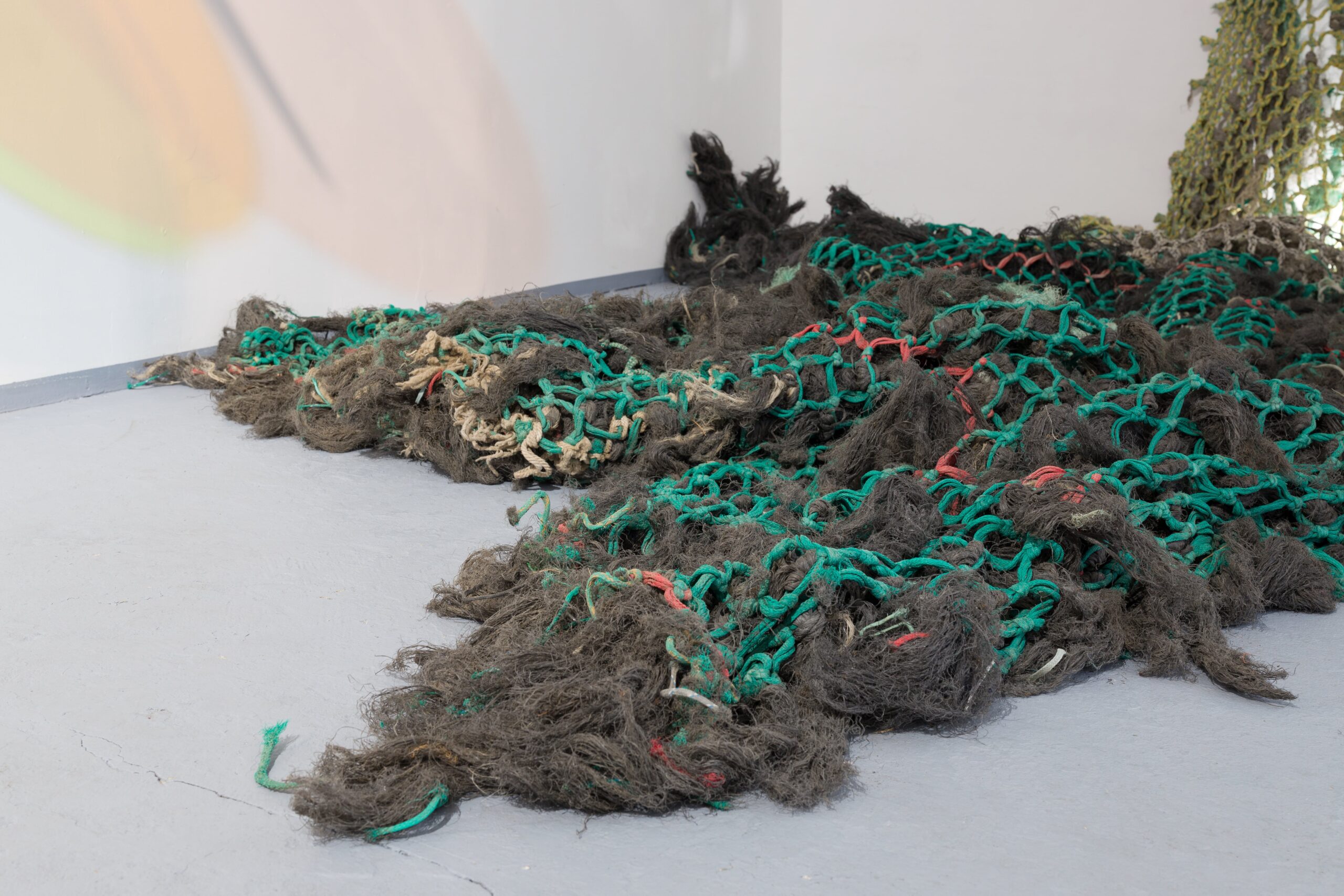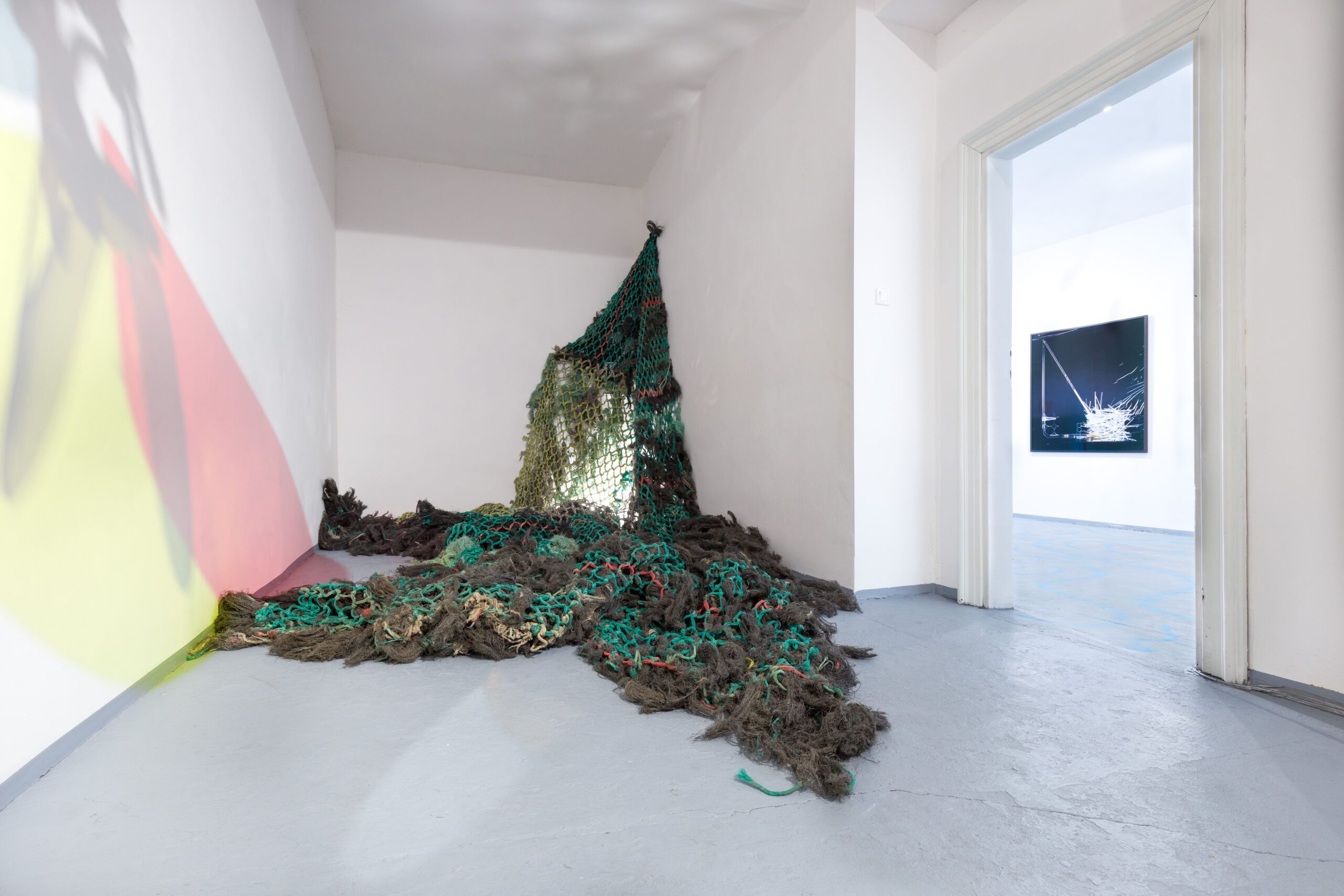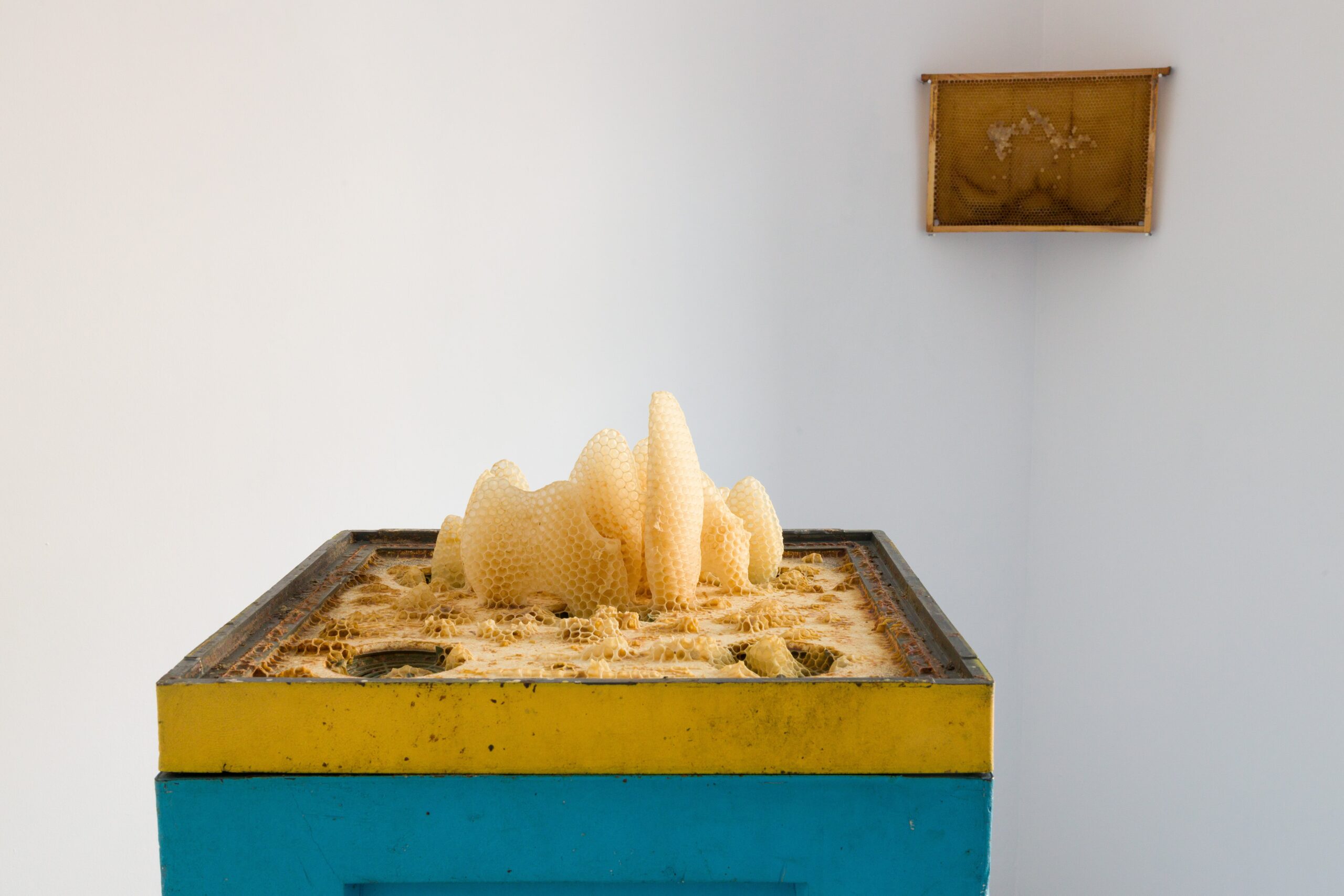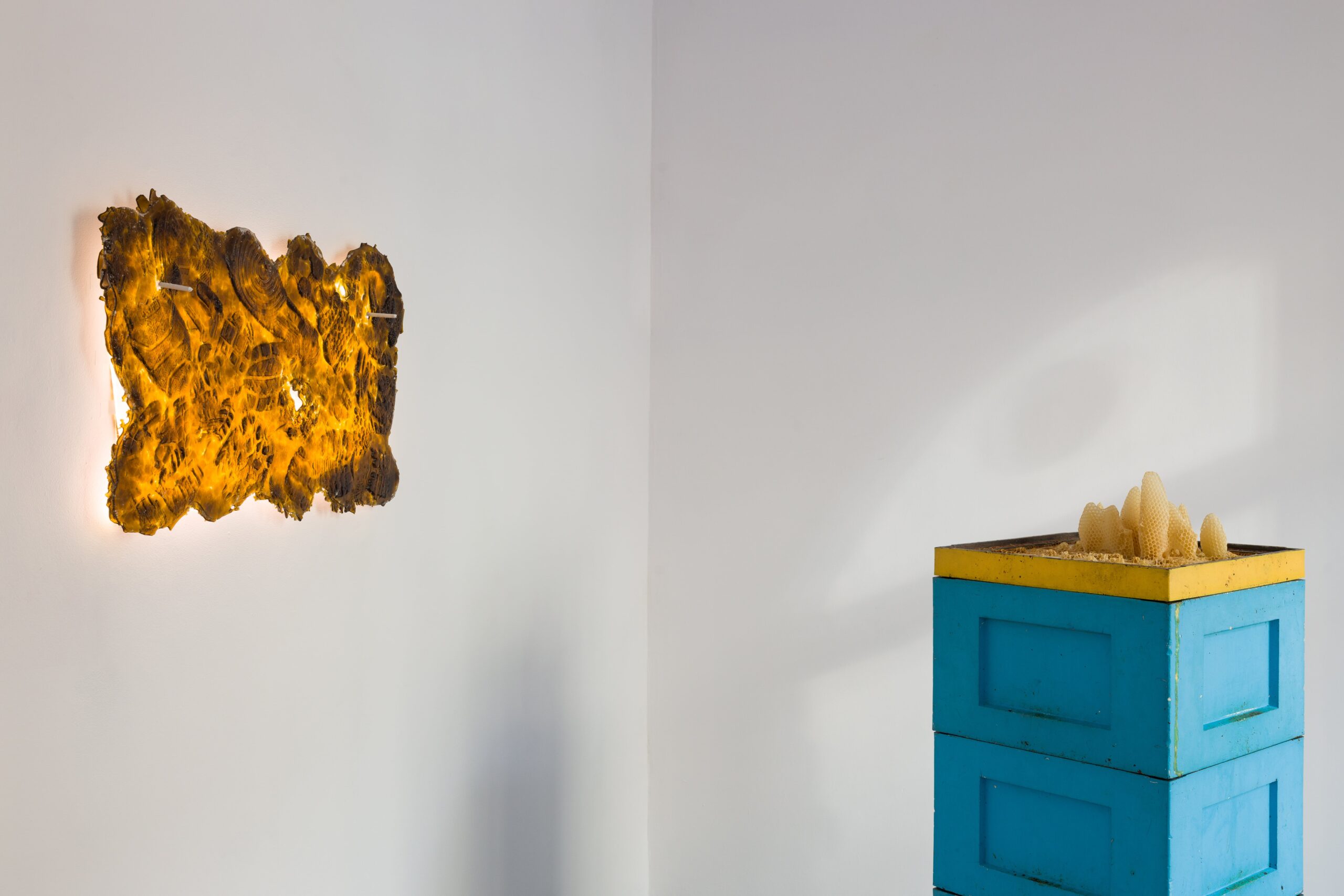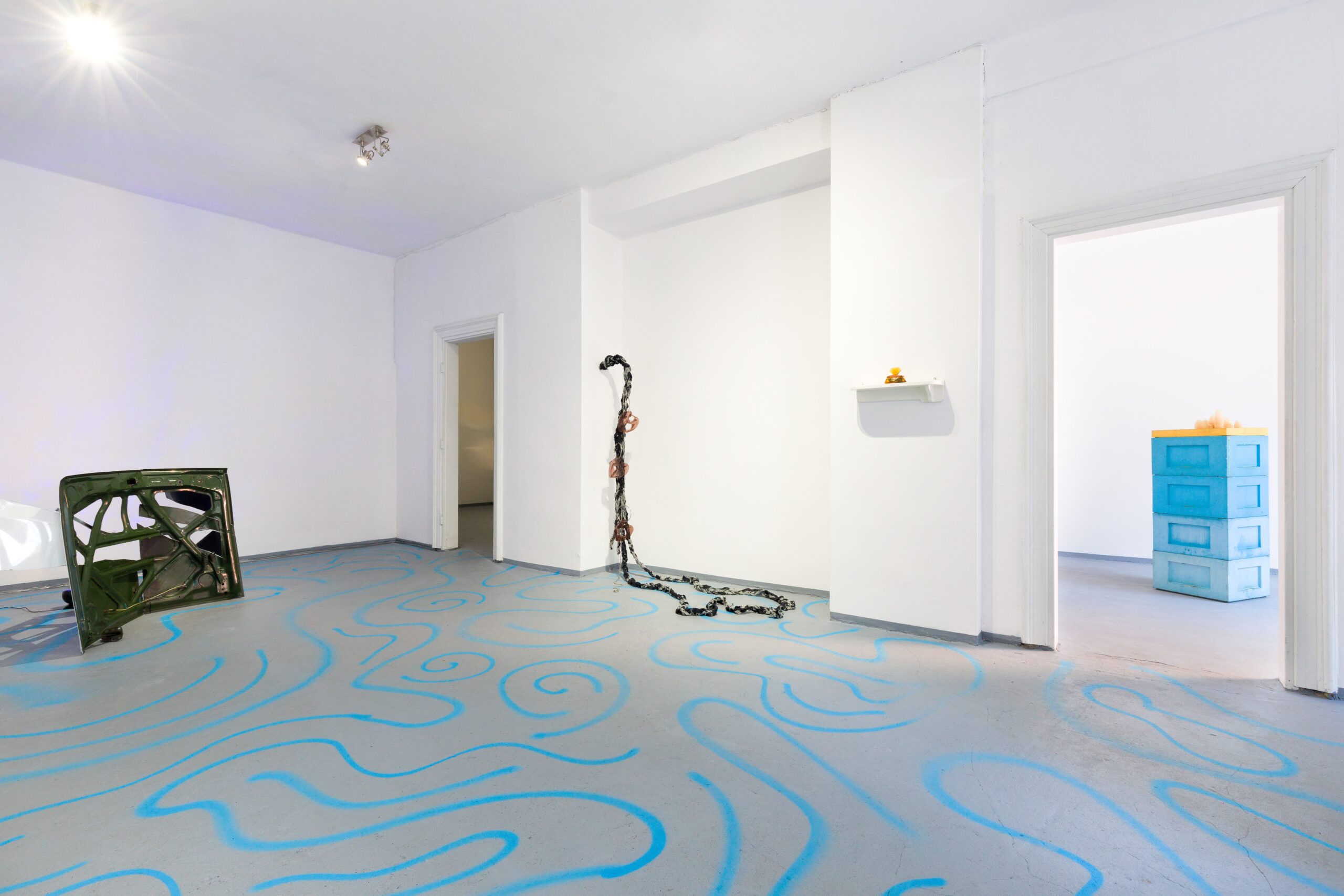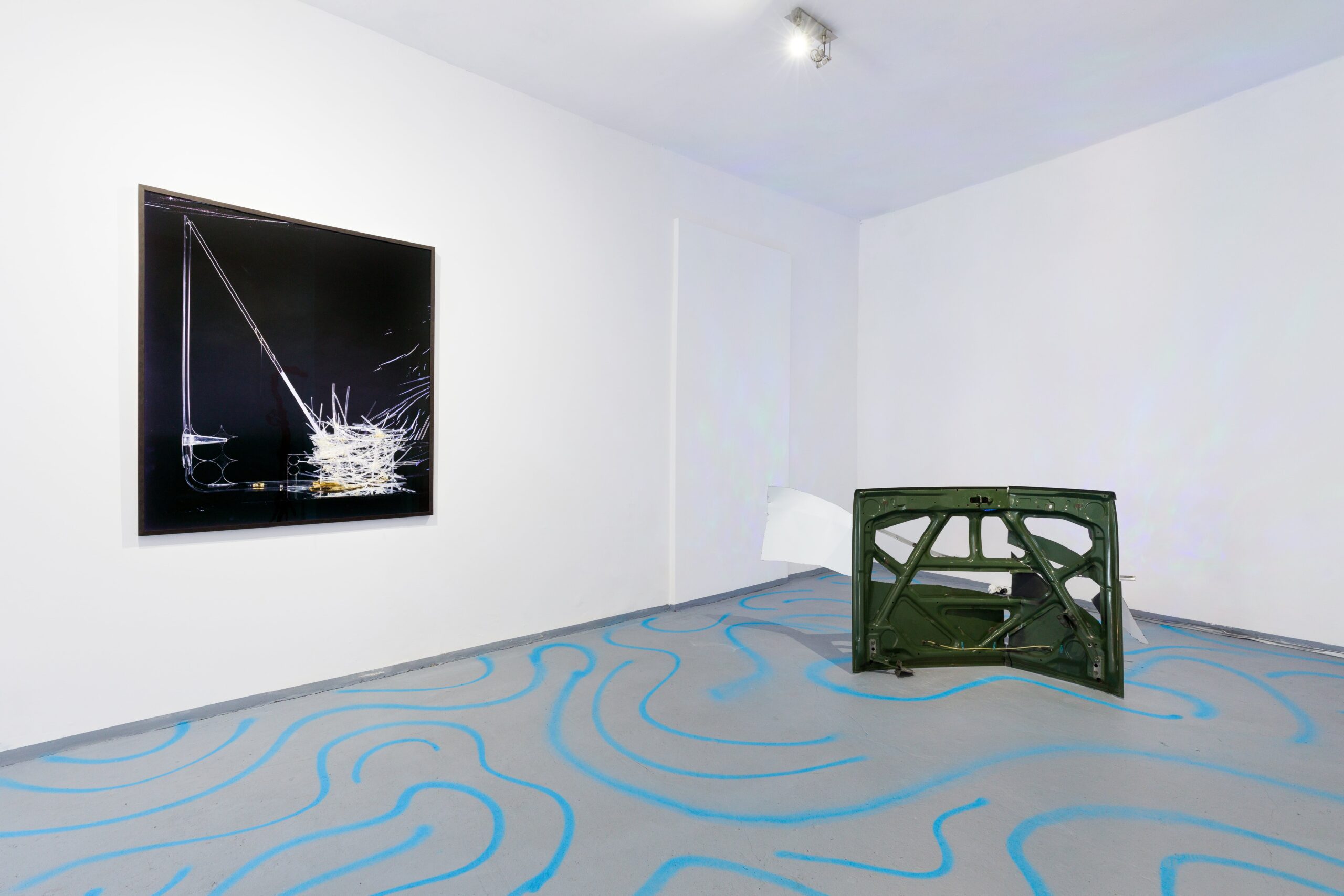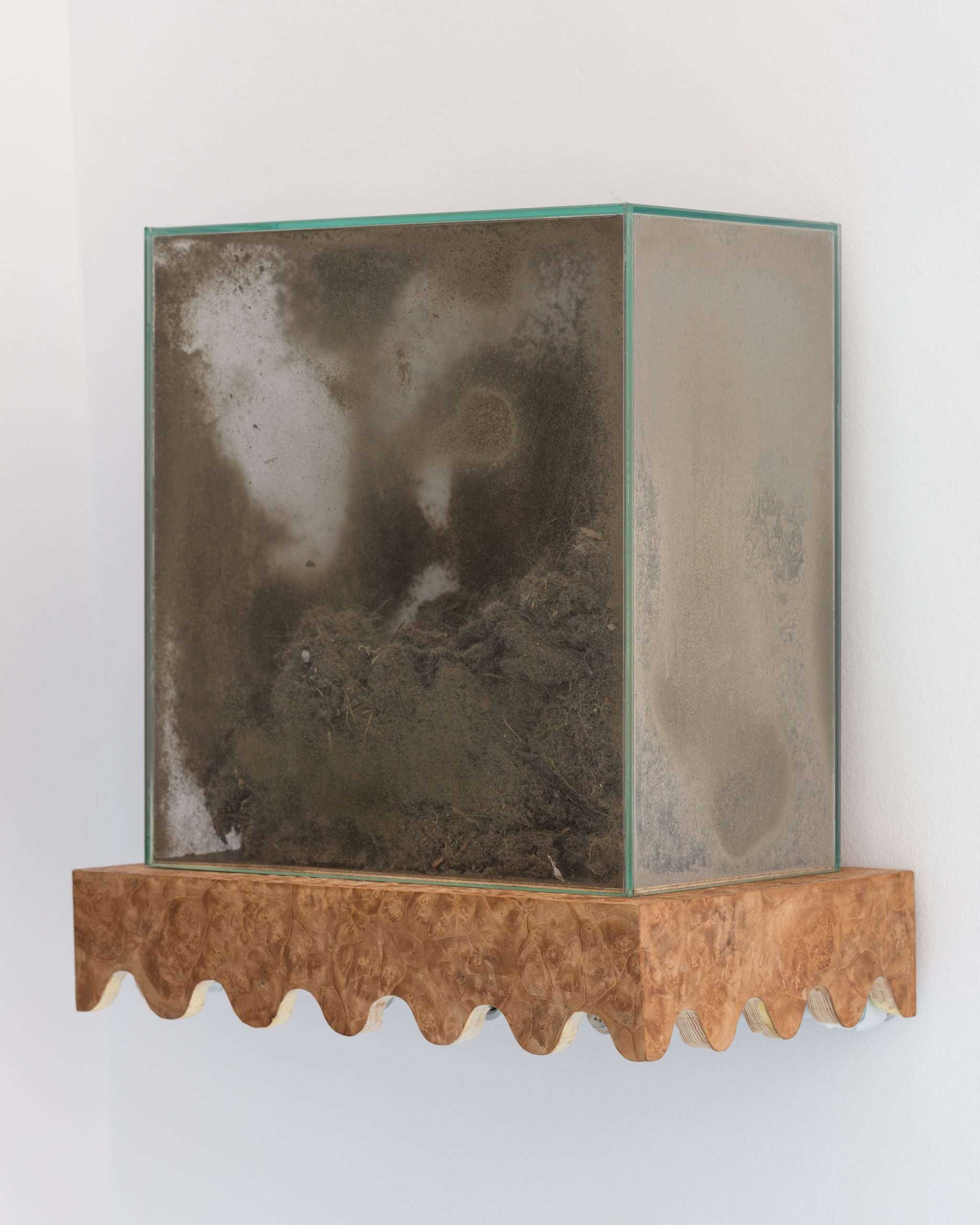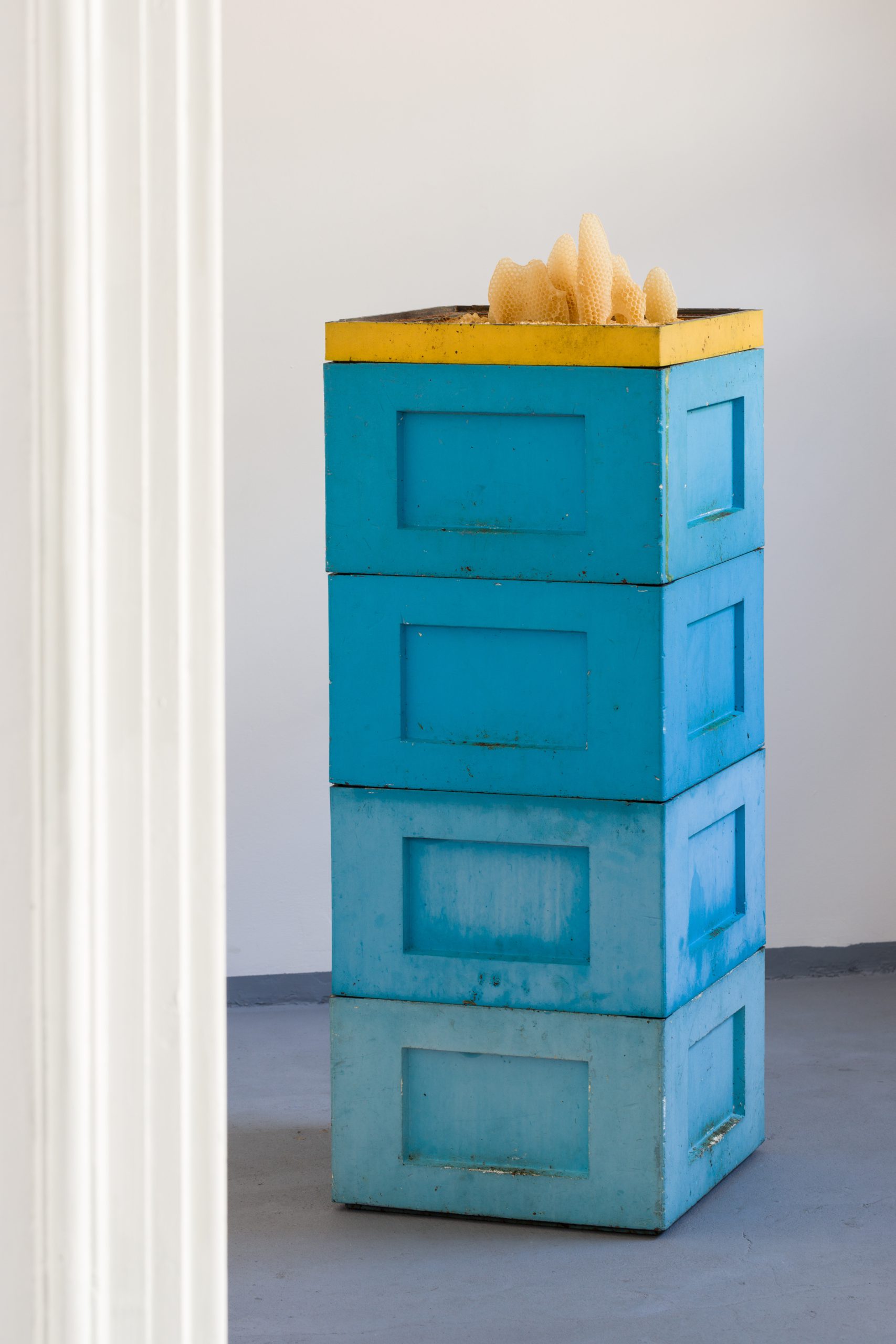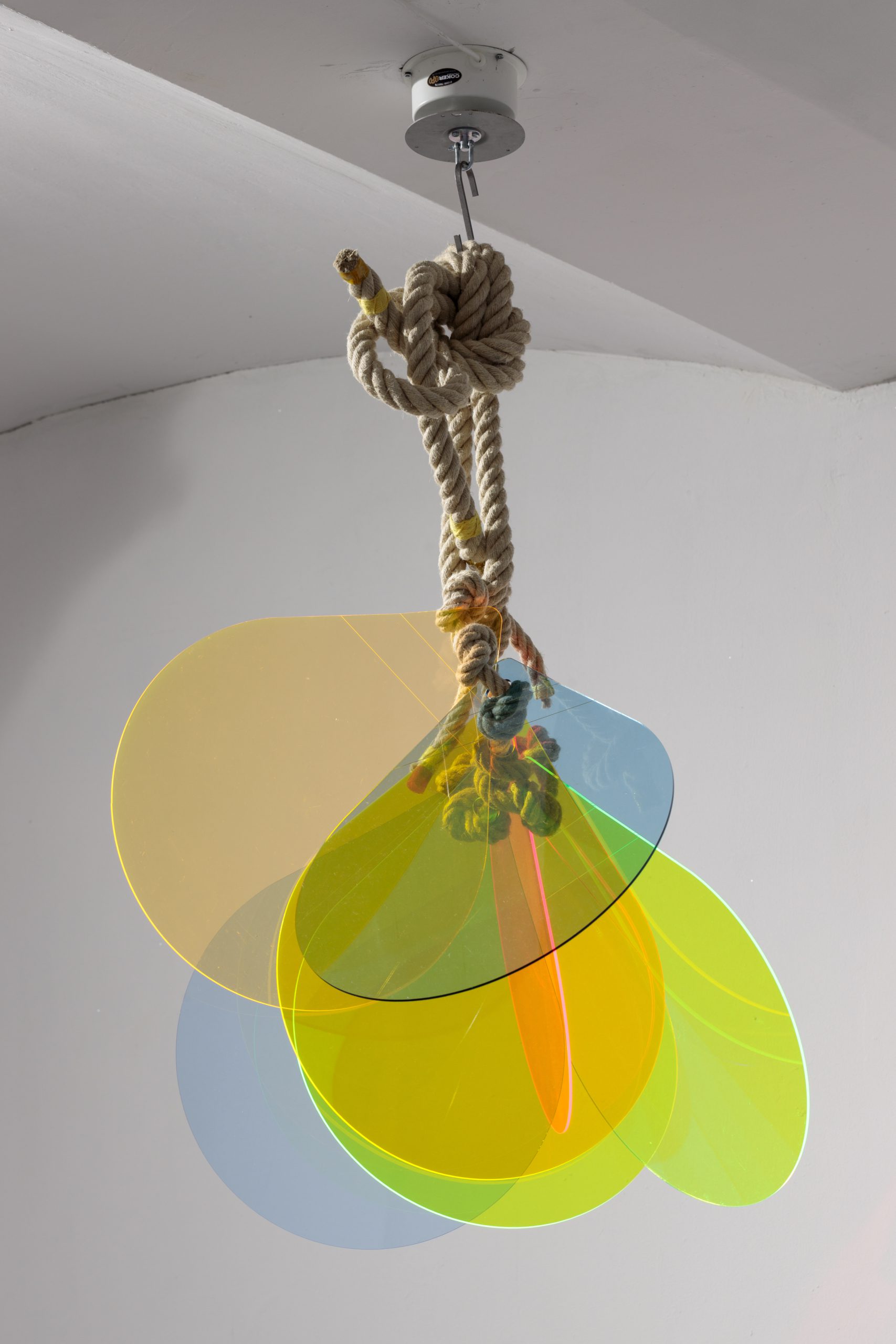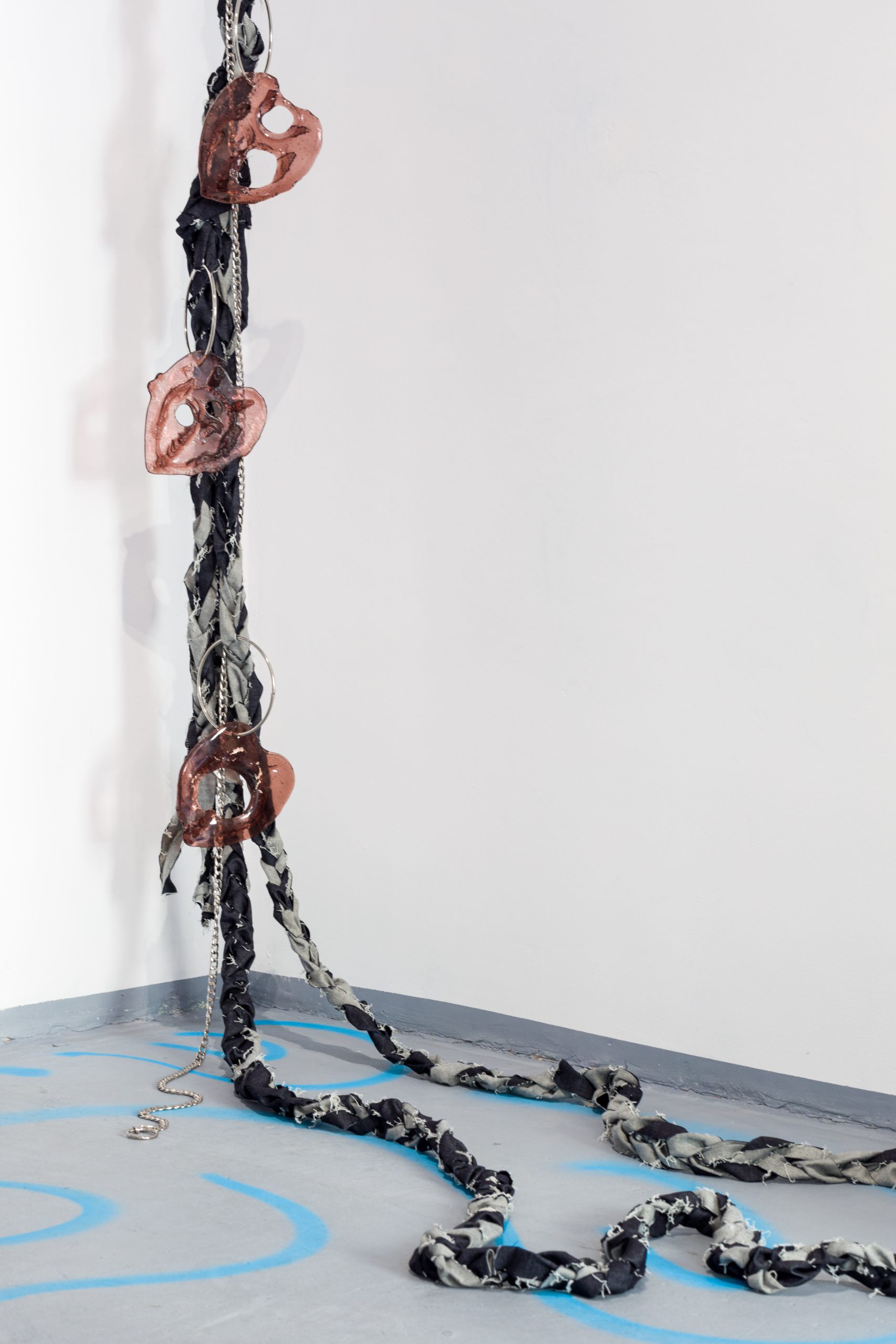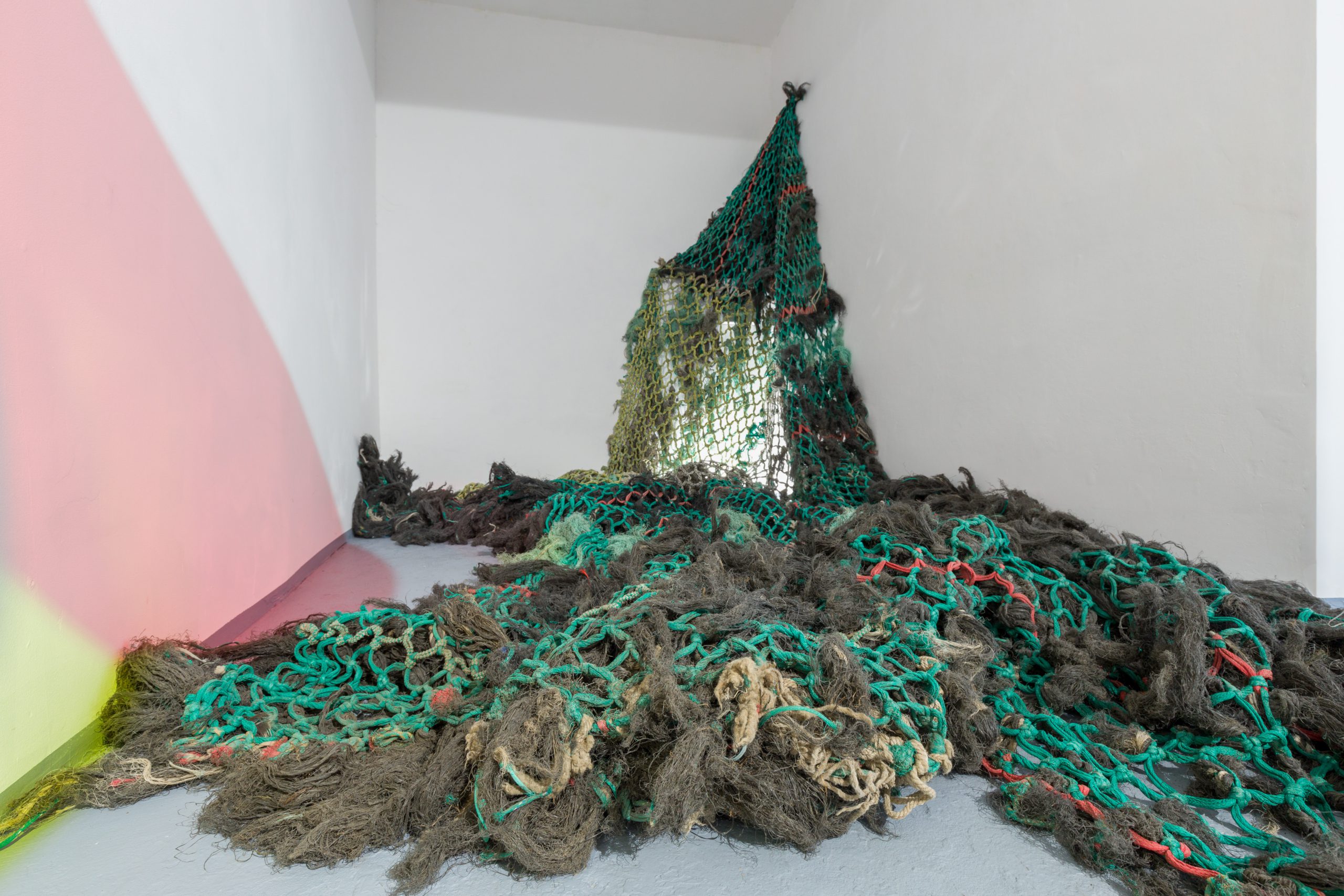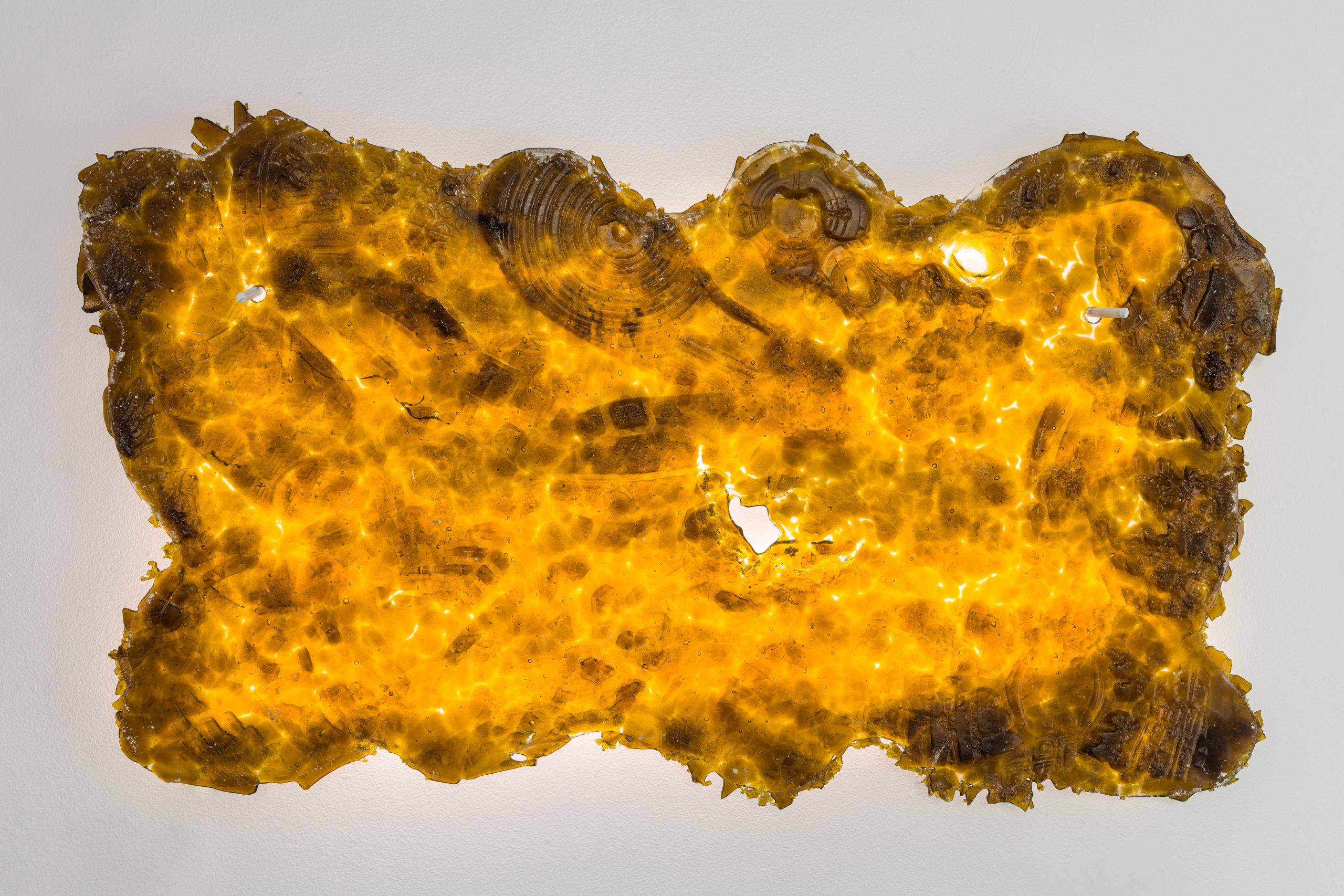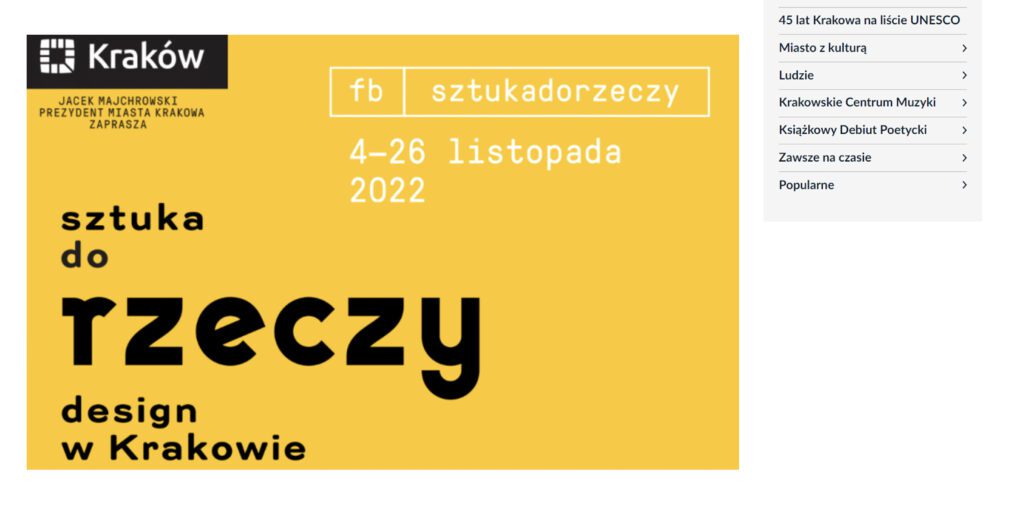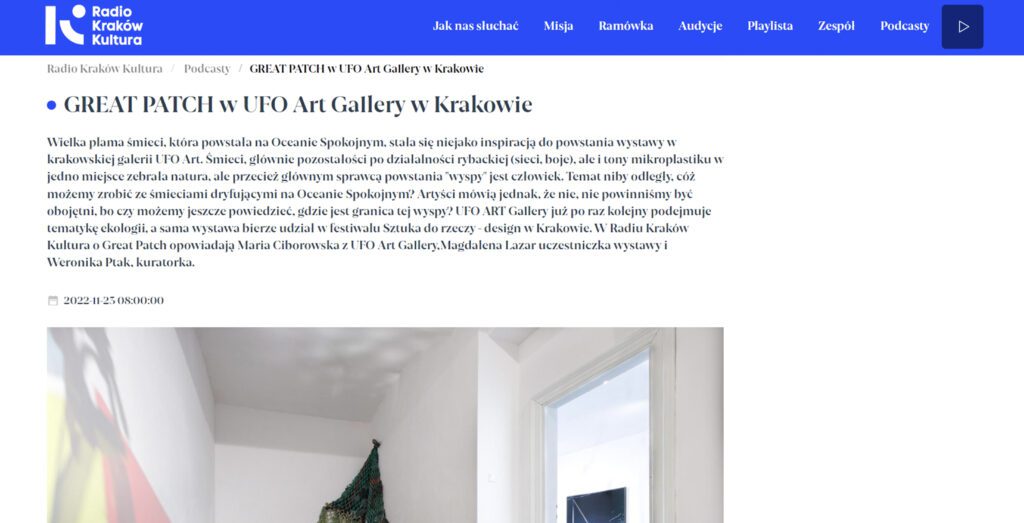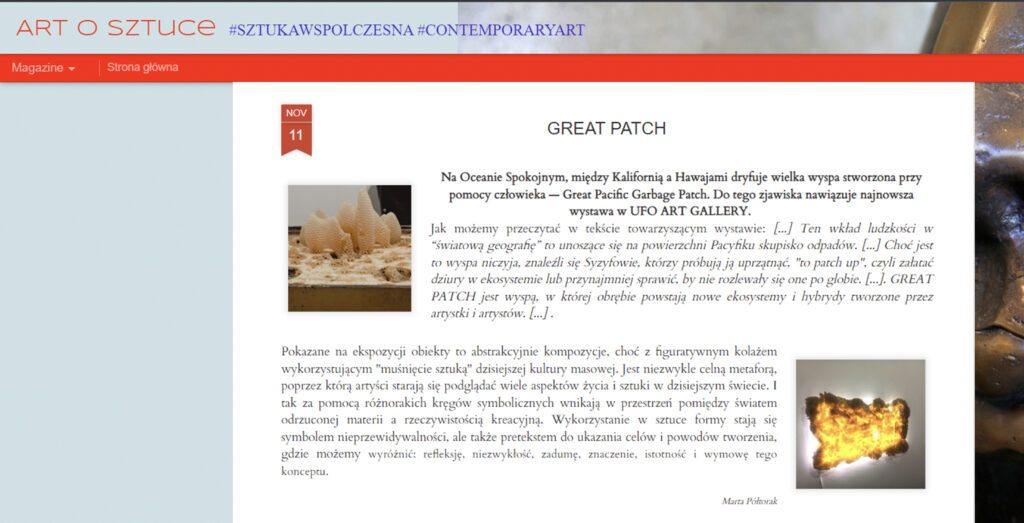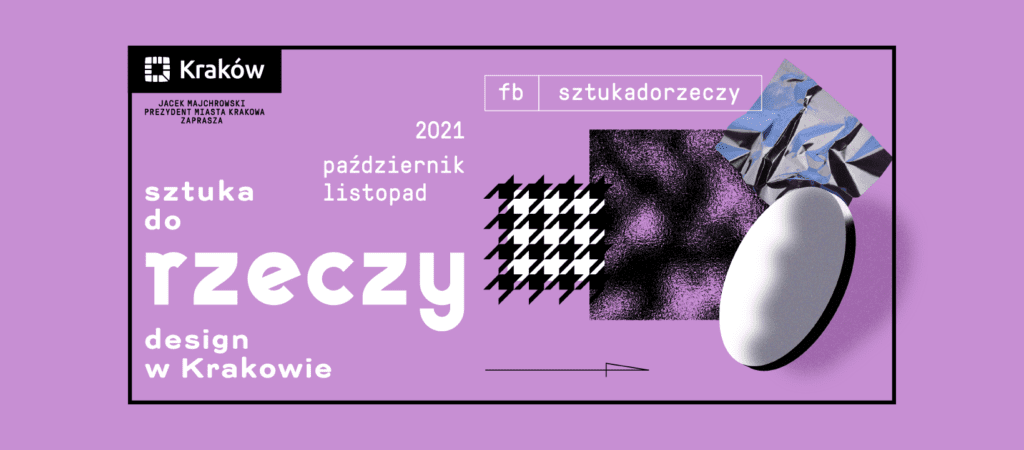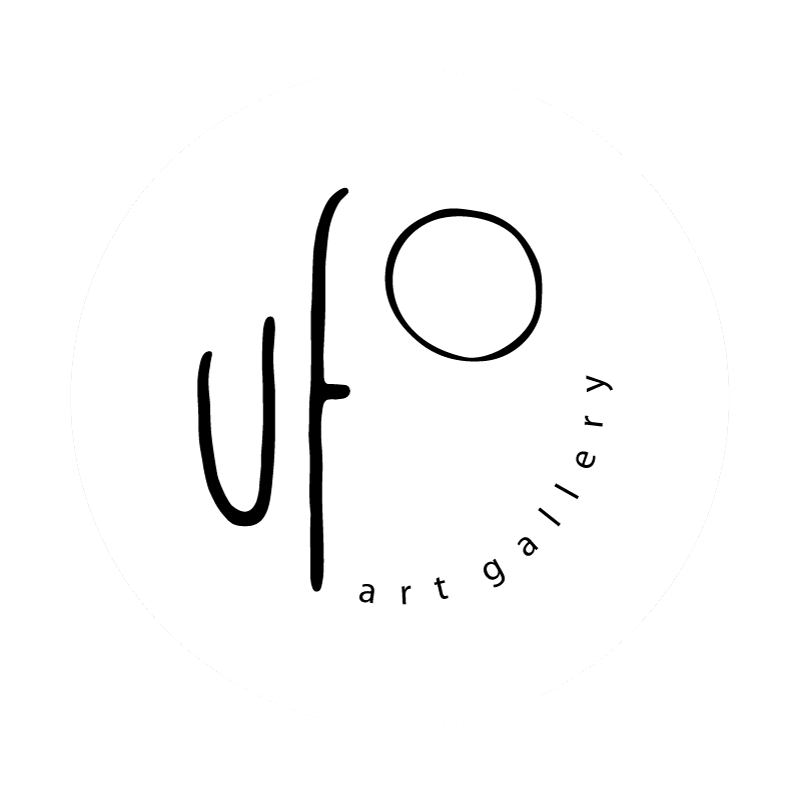In the Pacific Ocean, between California and Hawaii, a large man-made island drifts – the Great Pacific Garbage Patch. This human contribution to “world geography” is a floating accumulation of waste on the surface of the Pacific. Although this is not entirely true. The island, or rather islands, was created by nature. Man provided only plastic, which the system of swirling ocean currents collected and trapped. Four currents rotating clockwise around an area of 20 million square kilometers: the California Current, the North Equatorial Current, the Kuroshio Current, and the North Pacific Current, have collected tiny fragments of plastic, like grains of sand and pebbles, that together look more like soup than land that we imagine when we think of an island. Although it is a no-man’s island, there are Sisyphus who try to clean it up, “to patch up”, i.e. to patch up the holes in the ecosystem or at least prevent them from spilling over the globe. However, microplastic is relentless and creeps into our lives every day, penetrating into living bodies.
Great Patcg is an island where new ecosystems and hybrids are created by artists. The raw metal of the car hood adopts biomorphic shapes, the pieces of plexiglass drip with honey, and its slices form a cityscape full of skyscrapers. GREAT PATCH strives with every fiber to connect with nature. Can we still tell where is the border of this island?
Weronika Ptak
